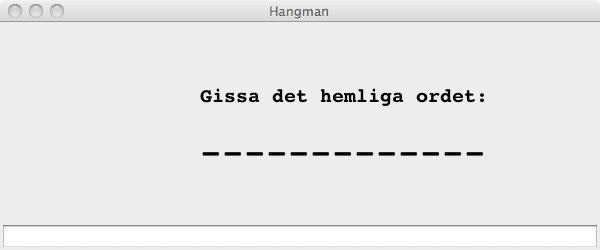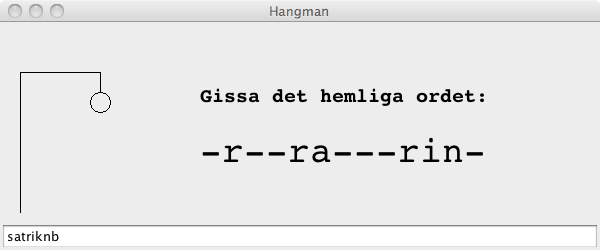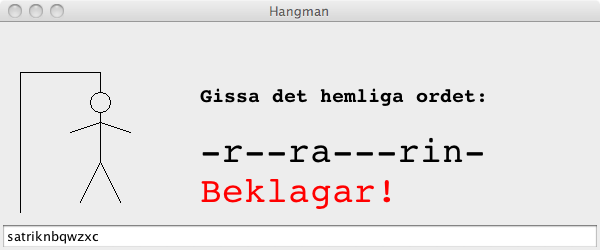public class Task1 {
public static void p(int n, Counter c) {
n = c.getValue();
c = new Counter();
}
public static void main(String [] args) {
Counter c = new Counter();
int n = 0;
c.incr();
p(n, c);
System.out.println(n + "" + c.getValue ());
}
}
The program uses the class Counter, that we discussed several times; For reasons of space, we do not repeat it here.
What does the program print when it is run? Explain briefly.
public static boolean increasing(int [] a); public static void main(String [] args);The first of these determines whether the numbers in the argument array represent a growing sequence. The other is a single main method testing the first method by command line arguments stored in a field of integers, the increasing method is called with this array of arguments and the result of the call will be printed. Example use:
> java Task2 3 5 82 93 true > java Task2 3 5 82 2 45 67 false > java Task2 4 true
- public void deposit(int amount); inserts amount amount in the account.
- public boolean withdraw(int amount); attempts to remove amount. If your account balance is less than amount, then it returns false and no withdrawal is made. Otherwise, it returns true and the account is reduced with the amount.
- public int getBalance(); returns the balance of the account.
Accounts are created with zero balances. Unlike from real banks, all transactions are in integer values.
import java.util. *;
public class Customer {
private Person name;
private List<BankAccount> accounts;
...
public int totalBalance() {...}
...
}
Several methods and state variables are skipped; it suffices to see that
the instance variables include a list of bank accounts.
Define the method totalBalance, which returns the total balance for all the customer's accounts.

The word thus has 13 letters. Then the user guesses a letter at a time; the letters included in the word are filled in the correct location(s); otherwise commence hang. The user makes their guesses with the keyboard; they appear in the text field at the bottom. Above is the secret word programmering. The user guessed S, A, t, r, i, k, n and b which resulted in the following situation:

Four letters were right and four were wrong, which led to drawing four parts of the gallows and the hanging man. If the user continues in this way the end state can become:

After nine incorrect guesses, the man is hanged and the player has lost.
The program, which is given below, consists (as usual) of four classes:
- Model class HangManModel.
- View class HangManPanel that draws the old man and prints the word (a drawing area which extends the JPanel).
- A further view HangManView which contains the entire interface; a HangManPanel and JTextField, where the user can make their guesses.
- A main class with main method.
Two things are included in the given program:
- The program selects the secret word by reading a file
with words and chooses a random word among them. The file name is given
on the command line. If the file is called words then the program
is run with:
> java Main words
We do not know how many words are in the file, but it is enough to choose among no more than the first 1000 words. The secret is chosen in function chooseSecret in Main. Define this function.
- class HangManModel keeps the secret,
the partial solution and the number of errors. Among other things,
it has the method:
public void guess(char c)
that is called when the user has made a guess. The method should fill in the guesses made in the right places and it should note when the guess was incorrect. Define the method.
public interface Resistor {
public double getResistance ();
public int nrOfComponents ();
}
The first method returns the total resistance value, the second the number of simple resistor components in the total circuit.
We can create resistors in three different ways:
- As simple resistors, objects of class
public class SimpleResistor implements Resistor { private double resistance; public SimpleResistor(double resistance) { this.resistance = resistance; } public double getResistance() {return resistance;} public int nrOfComponents () {return 1;} } - By connecting two resistors in parallel; we create
an object of class ParallelResistor, which
has constructor
public ParallelResistor(Resistor res1, Resistor res2);
Note that res1 and res2 does not need to be simple resistors; they may themselves be parallel or serialy connected resistors. - By connecting two resistors in a seria; we create
an object of class SerialResistor, which
has a constructor
public SerialResistor(Resistor res1, Resistor res2);
- Define the class ParallelResistor.
- Type a main routine that tests your class by building a resistor by parallel connection of 100 simple resistors with resistance 1, 2, ..., 100 ohms and prints both the total resistance and the number of simple resistors.